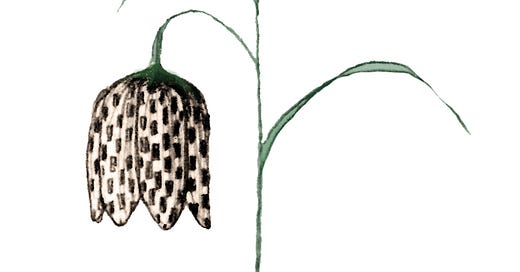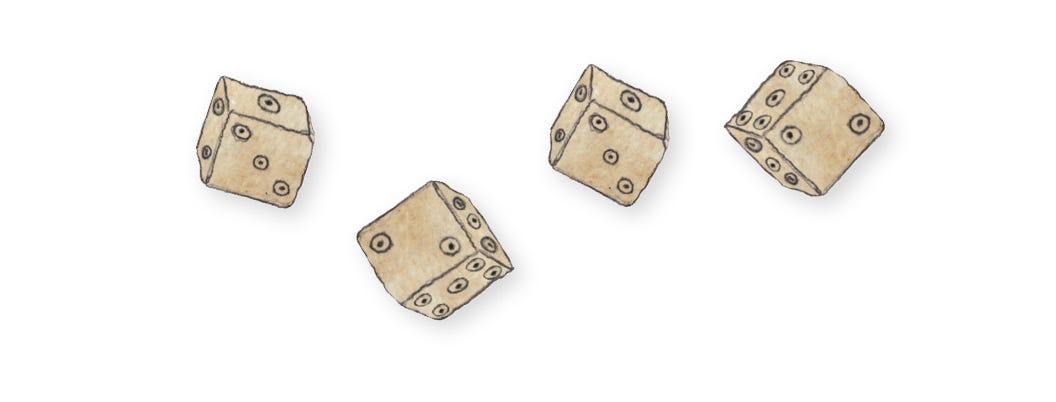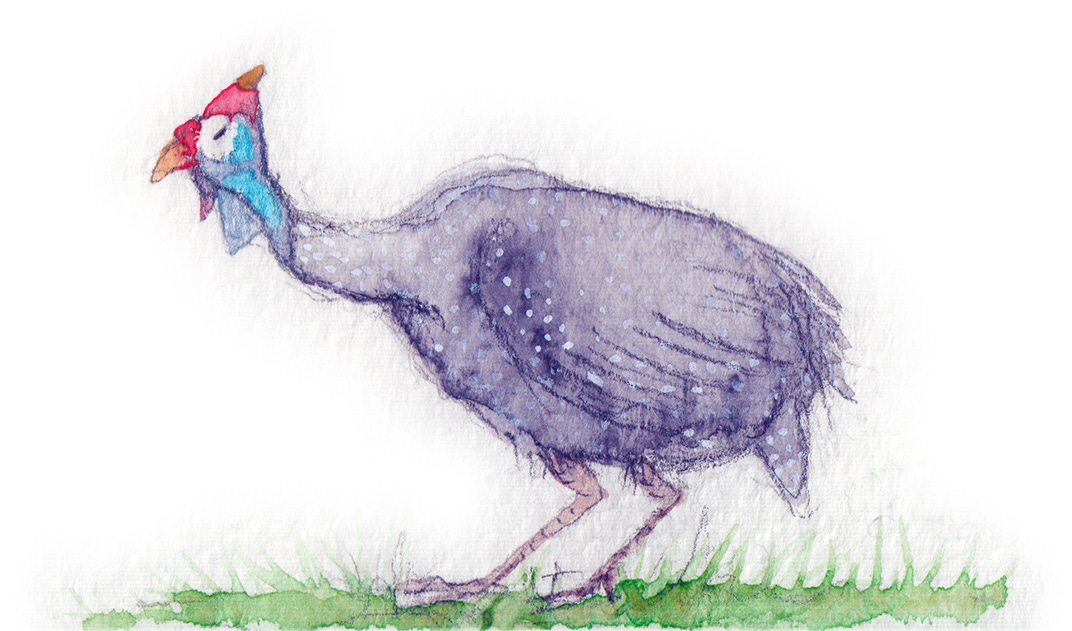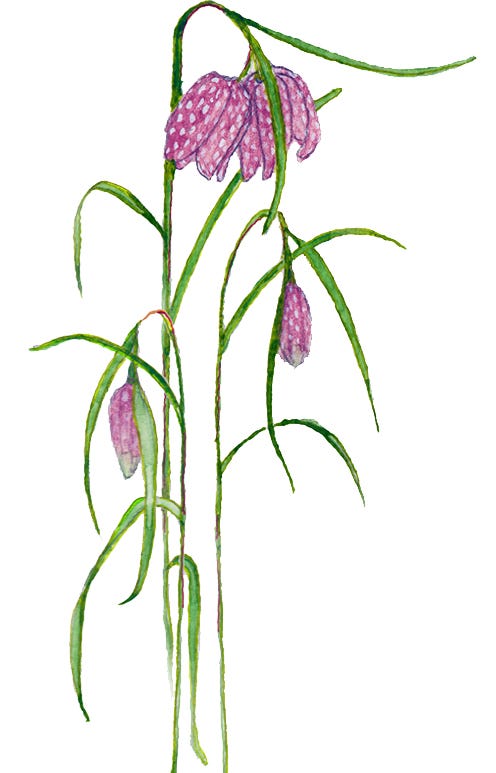Life as a soldier in the Roman army was tough. Next to practising their fighting skills, the soldiers had to march for 18 miles twice a day. Whilst marching they had to carry their full armour, which weighed about 15kg. On top of that, they had to carry their battalion's equipment (their tent and things like cooking utensils and tools).
They'd set up a new camp every day, which involved digging a rampart (a protective barrier) around the camp, fortifying it with wooden stakes, and then setting up their tents for the night.
When it was finally time to relax, a favourite past time of Ancient Roman soldiers was gambling.
They used Fritilus (Latin), which were dice, for their gambling games and they are what this beautiful speckled flower was named after.
Because the shape of the flower looks a little like a snake's head this became part of the plant's common name too. The word snake can be traced all the way back to the Proto-Indo-European (PIE) word Sneg which means 'creeping thing'.
Meliagri comes from Meleagris (Latin) and means spotted feathers. The flower was very popular in 16th century gardens and was then called 'checkered daffodil' or 'ginnie hen flower', like the feathers of ginnie hens (now called guinea-fowl), which are also spotted.
Rabbits love eating snakeshead fritillaries and will eat every part of the plant apart from the bulb.
Although a great snack for rabbits, Snake’s head Fritillaries are poisonous and will give humans a tummy upset when eaten.
Alternative words for Snake’s head Fritillary are Leper's Bell, Leper's lily, crow cups, chess flower, frog-cup, guinea-hen flower, guinea flower, leper lily, Lazarus bell, chequered lily, chequered daffodil and drooping tulip. The first written name was checkered daffodil or ginnie hen flower in the 16th century, and was later recorded in 1686 as crowcup.
This newsletter is NOT a field guide for flower identification. As it’s often difficult to tell the difference between harmless plants and poisonous plants and because some flowers are rare and protected by law, NEVER pick or use any plants or flowers if you’re not sure about them.
illustrations ©Chantal Bourgonje













Thanks for sharing this for your new followers and subscribers. I've often admired these flowers in my neighborhood and wondered about the common name. I admire your illustrations as well.
Now I know what happens to my fritillary…bunnies! Love these posts Chantal!